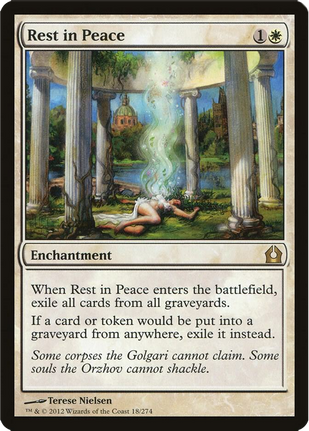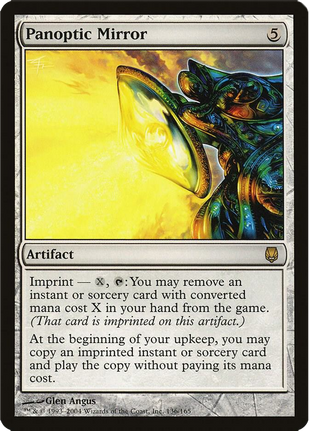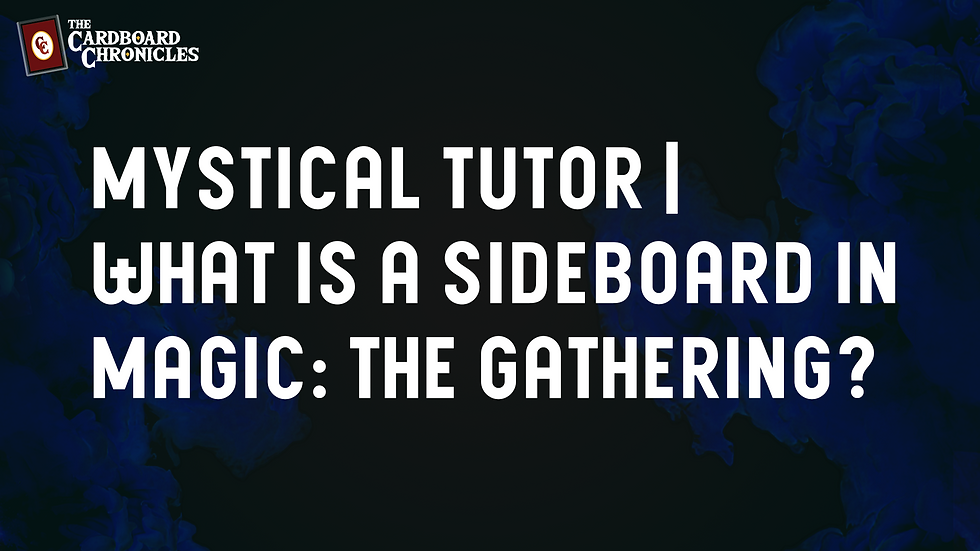Let's Answer Magic: The Gathering's Most Frequently Asked Questions
- Greg Montique

- Jun 4
- 4 min read
Getting into Magic: The Gathering is exciting, but let’s be real—it can also feel overwhelming at first. With so many cards, rules, and formats, it’s natural to have questions. Whether you’re building your first deck or trying to understand what all those phases mean, you’re not alone.

So let's answer some of Magic: The Gathering's most frequently asked questions by new players, with clear answers to help you level up your game.
What Is Magic: The Gathering?
Magic: The Gathering (or MTG) is a collectible card game where players battle as powerful wizards called Planeswalkers. You cast spells, summon creatures, and use artifacts to defeat your opponent. You typically win by reducing your opponent’s life total from 20 (depending on the format) to 0.
How Many Cards Can Be in a Deck?
It depends on the format:
Standard, Modern, Pioneer, Legacy: Minimum of 60 cards. No maximum, but you must be able to shuffle without assistance.
Commander (EDH): Exactly 100 cards, and no duplicates except for basic lands.
Limited (Draft or Sealed): Minimum 40-card deck.
How Many Copies of a Card Can I Use?
You can include up to four copies of any card with the same name, not counting basic lands, in most formats. Commander is different, it only allows one copy of each card, unless a card says otherwise or is a basic land.
What Are the Different Card Types?
Magic cards come in several types. The most common are:
Creature: Stays on the battlefield and can attack or block.
Instant: Cast any time, even on your opponent’s turn.
Sorcery: Cast only on your turn during your main phase.
Enchantment: Has a lasting effect on the game.
Artifact: Often colorless and sometimes equip to creatures.
Planeswalker: A powerful ally with loyalty abilities.
Land: Provides mana, which is used to cast spells.
What Is the Stack?
The stack is how Magic handles spells and abilities. When a spell is cast or an ability is triggered, it goes on the stack. Players can respond by adding more spells or abilities. The last thing added to the stack resolves first. It’s a bit like a pile of dishes, you deal with the top one first.
What Is the Turn Structure?
A turn in Magic has several steps:
Untap – You untap your tapped cards.
Upkeep – Some abilities trigger here.
Draw – You draw a card.
Main Phase 1 – You play lands and cast most spells.
Combat Phase – Declare attackers and blockers.
Main Phase 2 – Another chance to play spells.
End Step – Effects that say “until end of turn” wear off.
What Is Mana and How Do I Get It?

Mana is the resource you spend to cast spells.
You usually get it from lands, like:
Plains (white)
Island (blue)
Swamp (black)
Mountain (red)
Forest (green)
Each color has its strengths. For example, green has big creatures, while blue specializes in card draw and counterspells.
What’s the Difference Between Sorcery and Instant?
Both are spell types, but timing is key:
Sorcery: Can only be cast on your turn, during your main phase.
Instant: Can be cast at almost any time, even in response to other spells.
Knowing when to use each is an important part of strategy.
What Is Priority?
Priority determines who gets to act. After someone casts a spell or ability, the other player gets priority to respond. If both players pass priority, the top spell or ability on the stack resolves.
What Is a Mulligan?
If your opening hand is bad, you can mulligan. In most formats, each player draws seven cards. If you mulligan, you draw a new hand of seven, but you put one card on the bottom of your library for each mulligan taken. This is called the London Mulligan.
Can I Use Any Card in My Deck?
It depends on the format. Each format has its own ban list and card pool:
Standard: Recent sets only.
Modern: Sets from 2003 onward.
Commander: Cards must match your commander’s color identity.
Legacy/Vintage: Almost every card is legal, but some are banned or restricted.
Always check the legality of a card in the format you want to play.
What’s the Difference Between Casual & Competitive Play?
Casual play is about fun and creativity. You might use house rules, janky combos, or just your favorite creatures. Competitive play sticks closely to rules and formats, with optimized decks designed to win.
Both are valid ways to enjoy Magic. Pick what suits your style.
How Do I Know What Format I’m Playing?
Ask the group or store you are playing with. Formats like Standard, Modern, and Commander are common. If you are at a local game store, check the event listing or talk to other players.
Magic: The Gathering Questions Answered!
Coming in fresh to Magic: The Gathering can seem like a lot, but it gets easier the more you play. Ask questions, experiment with cards, and don’t stress about getting everything perfect right away.
Magic is a deep game, but at its core, it’s about having fun, building cool decks, and challenging your mind. Keep learning, keep shuffling, and enjoy the game.






















Comments